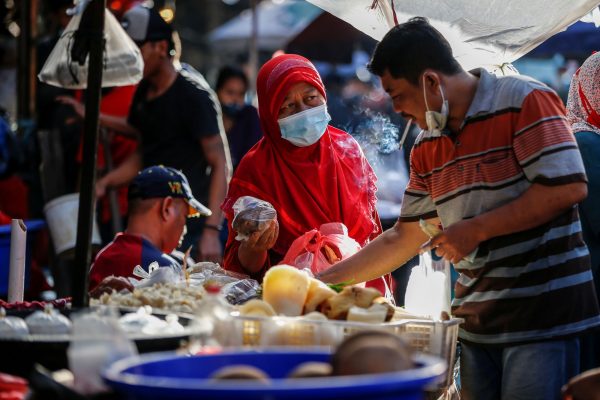A robust economic recovery will depend on the government’s ability to curb inflation in the short-term, improve workforce productivity and limit youth unemployment. Success will help Indonesia avoid potentially severe social and political implications associated with uncontrollable inflation.
The Indonesian government has spent more on short-term rather than long-term fiscal measures due to the urgent nature of the COVID-19 economic crisis. Yet the long-term process of paying for higher short-term fiscal outlays has not been carefully considered.
The Indonesian government’s use of various measures to aid financially burdened citizens with cash handouts is one example. Of course, these measures have been necessary in the short term but cannot be used indefinitely without ballooning the already massive tax burden currently facing Indonesian President Joko ‘Jokowi’ Widodo’s administration. Difficulties in collecting enough taxes to pay for greater fiscal spending pushed parliament and Indonesian Finance Minister Sri Mulyani, to back a new tax reform bill to boost government coffers.
The best-case scenario for Indonesia would be a period of gradual inflation. This would not be out of the ordinary after the largely supply-side recession caused by the COVID-19 pandemic. After a period of inflation, there could then be a gradual movement towards stable growth as productivity from the labour market improves.
Over Indonesia’s history, gradual inflation has been the norm. Although some might argue that Indonesia has experienced bouts of hyperinflation, these events have been rare. These include inflation spikes during the tumultuous transition of political power to former Indonesian president Suharto in 1965 and the 1998 Asian Financial Crisis. Inflation during the 1998 crisis, however, might be more accurately termed as rapid inflation rather than hyperinflation.
Gradual inflation is likely to occur if the country re-opens in a systematic manner with steady consumer and investment demand. Although Indonesia’s economy is comparatively stronger than it was in 1998, with larger reserves giving it a more optimistic outlook after the pandemic, there are a number of headwinds to any future economic recovery.
Indonesia’s workforce suffers from sub-par education. Although there is a healthy annual output of graduates, the majority have not been able to acquire full-time employment four to eight months or more after graduation. Indonesia does not suffer from a lack of graduates but a lack of appropriately skilled workers for employers to hire. Many graduates are not equipped for jobs in the current economy.
Workforce productivity will be critical to driving down the cost of the Jokowi administration’s massive infrastructure spending. Otherwise, with productivity lacking, the cost of infrastructure spending will be absorbed as public debt. Legally, Indonesia must hold public debt below 60 per cent of its GDP. Yet, this does not consider the possibility that private debt will soar because of Bank Indonesia’s loose monetary policy. High productivity can keep severe inflation at bay as debt can be financed by higher productivity and employment.
Between January 2020 and February 2021, Bank Indonesia cut its benchmark interest rate from 5 per cent to 3.5 per cent and deployed a large local currency government bond purchasing program to help finance government fiscal deficits. Yet because businesses have not been willing to take more risks across their portfolios, private credit growth has dropped. This has also been the experience in Japan, where low interest rates maintained by the Bank of Japan increased private debt; but with banks reluctant to lend, companies and households have not borrowed enough to stimulate growth. How Indonesia can avoid the same trap is unclear.
The societal consequences of economic malaise would be a calamity for Indonesia with the country’s young population relying heavily on a robust labour market. By curbing inflation, youth unemployment will likely decrease, and Indonesia’s economy could be more resilient than before the pandemic.
With Indonesia now being able to collect taxes more efficiently with the latest tax reform bill passed in parliament, the country is set on a more stable path for its fiscal position post-pandemic. Youth unemployment was a common problem in Indonesia before COVID-19, and the pandemic-associated economic shock has not improved labour market conditions. This problem requires a greater set of reforms that will only be implemented once the economy stabilises through proper management of inflation. Then, moving forward, Indonesia can set its sights on greater economic growth.
Gerardus Yosari is a Research Analyst in the Indonesia Programme at the S Rajaratnam School of International Studies, Nanyang Technological University, Singapore.

